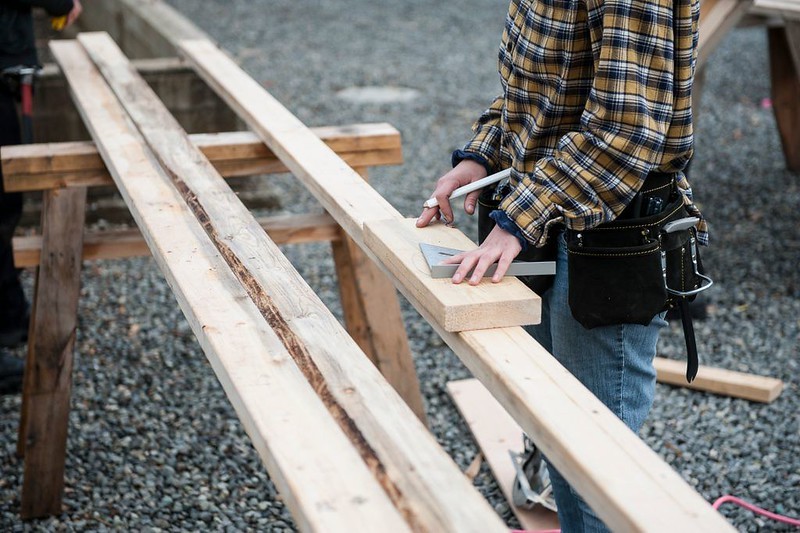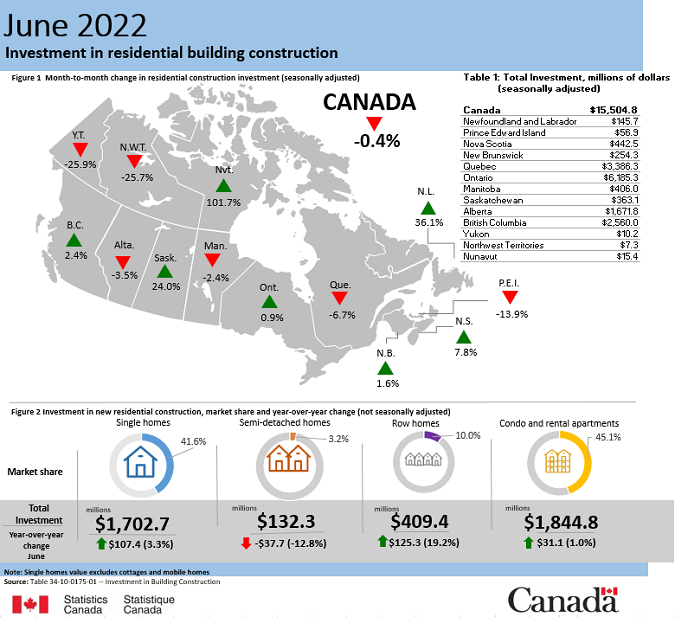StatsCan: Quebec leads dip in residential construction spending
Ontario was head of the pack for construction investment while Quebec dragged down residential investment.

Residential construction investment saw a dip last month. – Province of B.C.
Key Takeaways:
- Quebec struggled with residential construction investment.
- Ontario showed strong recovery following construction worker strike.
- Overall investment in construction saw growth, bolstered by non-residential work.
The Whole Story:
Residential construction experienced its first major hiccup of the year. Statistics Canada announced residential construction investment dipped for the first time in nine months in June while gains in the non-residential sector helped push overall construction investment up 0.3 per cent to $20.8 billion.
The agency explained that the majority of strength for the month came from Ontario, reporting gains in all building components following a weak May resulting from a construction workers strike in the province.
On a constant dollar basis (2012=100), investment in building construction declined 0.6 per cent to $12.5 billion.
Quebec creates drag
Despite six provinces reporting growth, residential construction investment declined 0.4 per cent to 15.5 billion in June, with Quebec (-6.7 per cent) contributing the most to the dip.
Multi-unit construction investment fell 1.6 per cent to $6.9 billion in June. The agency noted that despite the decrease, investment in multi-unit construction has shown an overall upward trend since last October.
Within residential construction, Investment in single-family homes continued to show strength, having outpaced multi-unit construction since the COVID-19 pandemic downturn. It increased 0.7 per cent to $8.6 billion in June, with gains in six provinces.

Non-residential construction investment increased 2.4 per cent to $5.3 billion in June.
Commercial investment advanced 2.7 per cent to $3.0 billion, led by Ontario (+4.1 per cent). This boost came after falling for the first time in 13 months in May due to the Ontario construction workers strike. The commercial component made up for the temporary decline and continued its upward trend, said the agency.
Institutional construction investment rose 0.7 per cent to $1.4 billion with six provinces reporting gains, led by Ontario (+3.8 per cent).
Beyond homes
Investment in the industrial component increased 3.7 per cent to $974 million, the highest monthly value increase since May 2020, just after pandemic-related shutdowns.
The total value of investment in building construction rose 3.3 per cent to $62.3 billion in the second quarter, the third consecutive quarterly increase. Investment for residential buildings reached $46.4 billion, largely due to increased spending on multi-unit construction. The non-residential sector rose 2.6 per cent to $15.8 billion.
Ontario’s growth in the second quarter remained flat when compared with the first quarter of the year, with the strike impacting investment in all components. Industrial construction was the only component to show notable growth for the east.
Single-unit gains
Residential investment in the single-unit component increased for the third quarter in a row, rising 2.6 per cent for the quarter to $25.7 billion. Statistics Canada highlighted that the multi-unit component has increased for the previous three quarters, rising 4.5 per cent this quarter, with most of the growth coming from Quebec.

